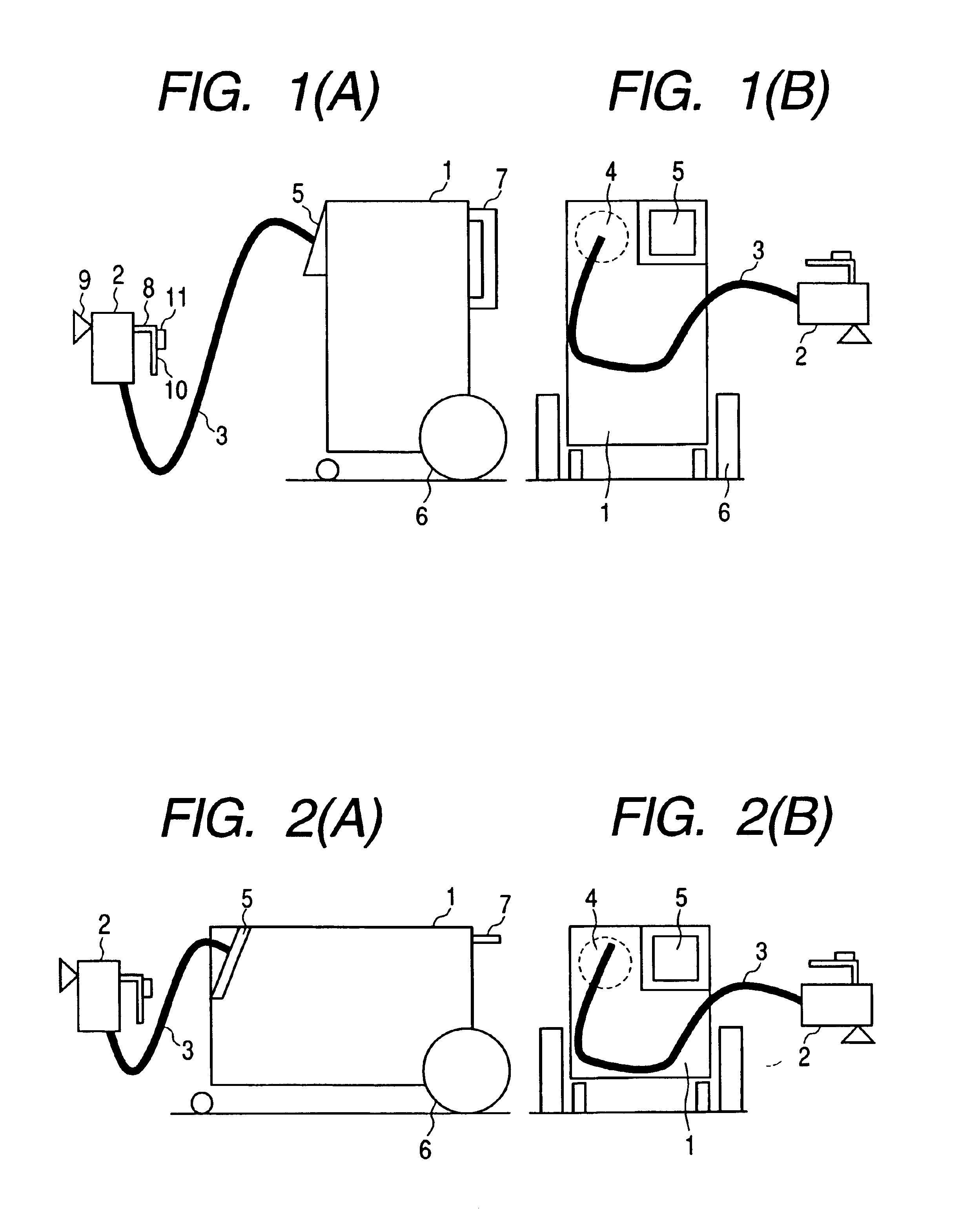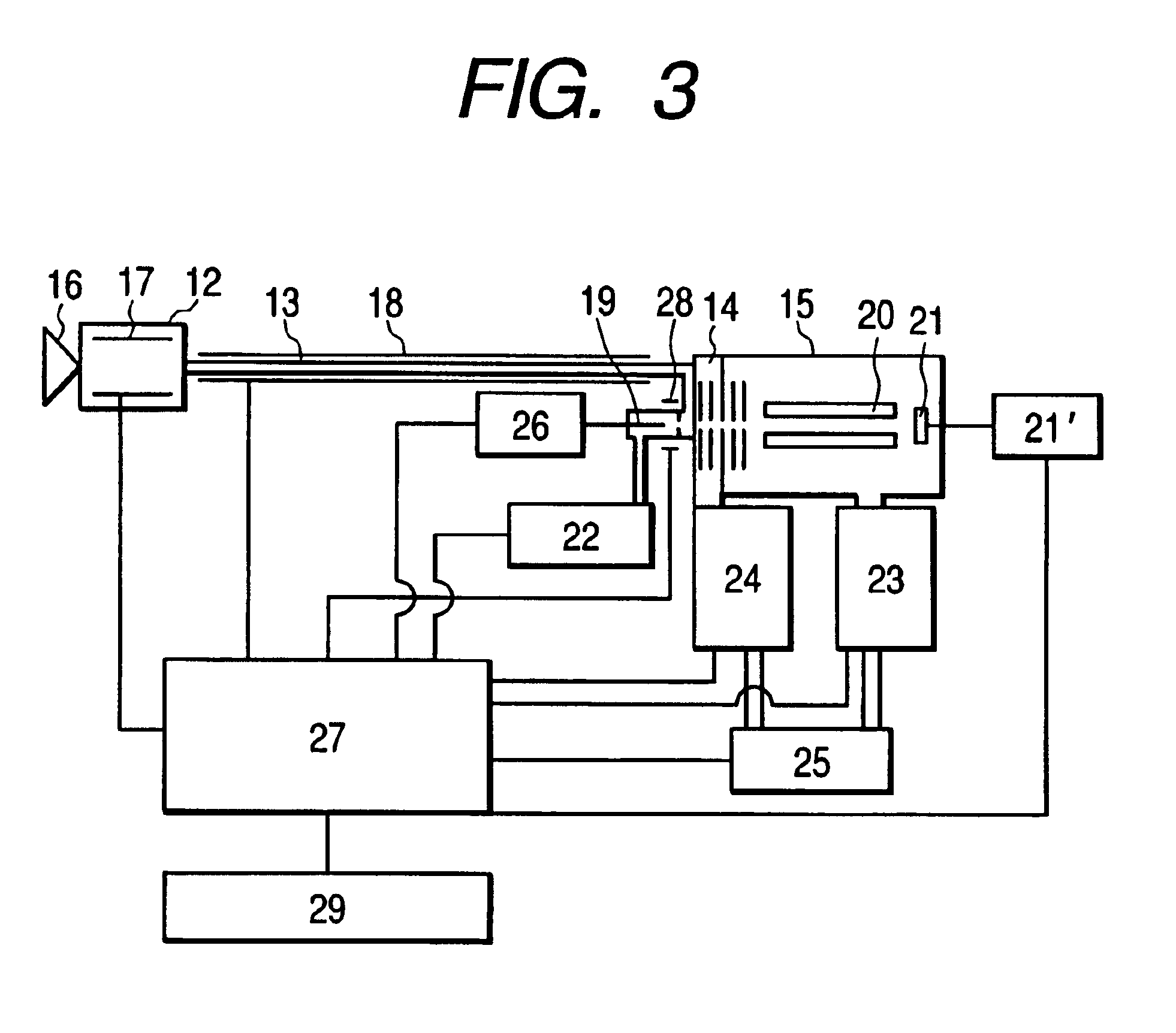Explosive detection system
- Summary
- Abstract
- Description
- Claims
- Application Information
AI Technical Summary
Benefits of technology
Problems solved by technology
Method used
Image
Examples
first embodiment
(First Embodiment)
FIGS. 1(A) and 1(B) are diagrams showing an exterior view of a vertical detection system in a first embodiment of the present invention. FIG. 1(A) is a side view, and FIG. 1(B) is a front view. The detection system of the first embodiment includes a system main body (mass analysis system) 1 of the detection system, a mass analysis region 4 disposed in the system main body 1, an absorption region 2 for absorbing and collecting vapor from a detection subject substance, and an absorption pipe laying 3 for supplying vapor of the detection subject substance absorbed by the absorption region 2 to an ion source of the system main body 1.
The system main body 1 has a touch panel control screen 5 or a computer. Respective regions of the detection system are controlled by commands issued from the control screen 5 or the computer. The system main body 1 has a movement tire 6 made of rubber, and the system main body 1 can be moved. The system main body 1 can get over a differen...
second embodiment
(Second Embodiment)
In the first embodiment, heating electric power of the above-stated regions is controlled in current, voltage or electric power. In a second embodiment, the start time is shortened by controlling the heating electric power of the respective regions and thereby increasing the heating efficiencies of the respective regions while suppressing the electric power.
FIG. 6 is a diagram showing an example of a change of electric power in the case where electric power is controlled in the second embodiment of the present invention. Upon beginning of start of the detection system, the controller 27 first consumes electric power mainly. Subsequently, heating of the absorption region heater 17, the pipe laying heater 18, and the ion source heater 28 is started (heating ON). Heating is conducted with full power 100% of a degree that does not exceed the maximum electric power. Heating is temporarily stopped and the warmth keeping state is maintained (heating OFF).
Subsequently, th...
third embodiment
(Third Embodiment)
As described in the first and second embodiments, it takes a longest time in the detection system to heat the heaters 17, 18 and 28 respectively of the absorption region 12, the absorption pipe laying 13, and the ion source 14. In a third embodiment, therefore, the heaters 17, 18 and 28 are always subject to preliminary heating in a state where the detection system is not used and when the detection system is being moved. For example, when the detection system is mounted on a transportation car and transported, the heaters 17, 18 and 28 are always subject to preliminary heating using the electric power of a power supply of the transportation car during the transportation. As a result, the measurement start time of the detection system after the conveyance can be advanced. Power may be supplied from an internal battery or an external battery to the heaters 17, 18 and 28. Since the heaters 17, 18 and 28 are always subject to preliminary heating even in the case where...
PUM
 Login to View More
Login to View More Abstract
Description
Claims
Application Information
 Login to View More
Login to View More - R&D
- Intellectual Property
- Life Sciences
- Materials
- Tech Scout
- Unparalleled Data Quality
- Higher Quality Content
- 60% Fewer Hallucinations
Browse by: Latest US Patents, China's latest patents, Technical Efficacy Thesaurus, Application Domain, Technology Topic, Popular Technical Reports.
© 2025 PatSnap. All rights reserved.Legal|Privacy policy|Modern Slavery Act Transparency Statement|Sitemap|About US| Contact US: help@patsnap.com



